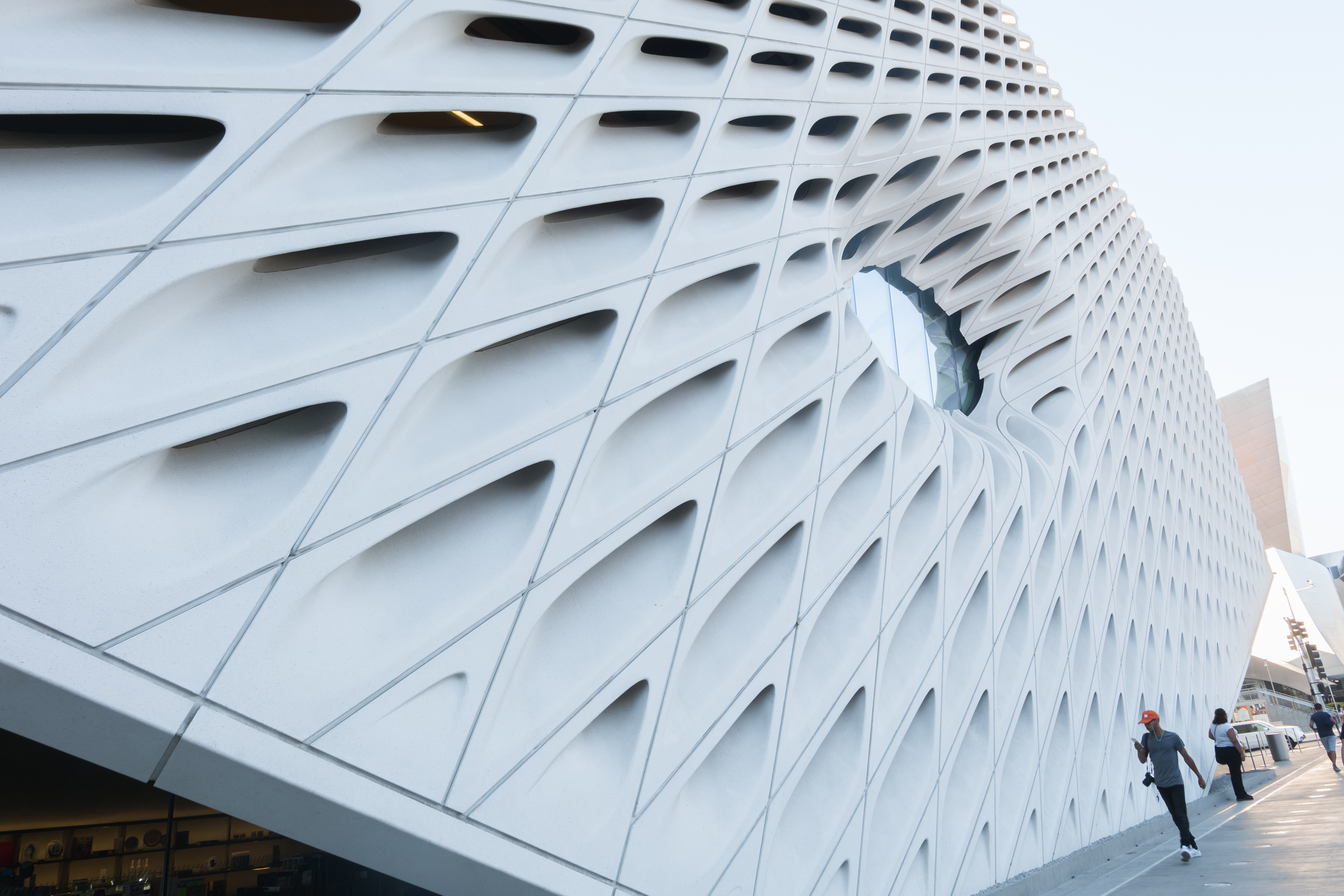Good design or good photo ops?
ArchDaily tackled a topic that may seem odd at first, but which they make a solid case for, providing a surprising amount of evidence to deal with: architecture and construction are being driven not just by form or function but by photographability, to accommodate the culture of Instagram and Pinterest.
“When The Broad museum opened in Los Angeles in 2015, it was immediately an Instagram sensation. You just couldn’t miss the “Instagram-worthy” new cultural institution, or the FOMO would be excruciating. Not only is the structure highly Instagrammable—consisting of honeycomb, off-white buildings with clear cut angles—but the art on display also works its magic, splashing its colors from the white walls like the perfect eye candy. The museum’s popularity grew so strong on Instagram that for the 2017 Yayoi Kusama exhibition it reported sales of 40,000 tickets linked to traffic coming from the app. Designed by global architecture firm Diller Scofidio + Renfro (DS+R), The Broad seems to naturally make people reach for their phones to snap photos—both on the outside and the inside—as visitors take full advantage of the good lighting and art hanging around. The same is true for many of the firm’s projects.”
Form over function
On a purely architectural point of view, however, these designs are being critiqued by architecture commenters—for example in this editorial published in The Architectural Review—because of the materials used, which are being chosen on the basis of their colors and feel rather than on how they will age or if they will be functional at all. Cladding that easily stains or peels, reflective surfaces that result in blinding spots, and shiny floors that become dangerously slippery with the tiniest drops of water are only some of the issues standing as testimony of what happens when architects prioritize photographability over function.
In the words of British architect Farshid Moussavi, “Instagram is reinforcing the fact that space matters, which can only be a good thing for designers and architects.” While this is definitely true in terms of more business for architecture and interior design studios, as both public and private spaces are in need of more frequent refurbishments to keep up with the pace of social media trends, it is worth reflecting on the role of designers. It is true that architects have been designing photogenic buildings for a while now, and that social media architecture may represent an extension of the “Kodak moment.”
However, isn’t it just being reduced to a backdrop provider, ultimately flattening the world into a giant selfie stage? We could say that Instagram is encouraging more people to go to art exhibitions and to pay attention to their surroundings. But we could also argue that when people go somewhere with the intention of posting about it on Instagram, the app is controlling how they plan their day—even down to their outfit or makeup—and how they will interact with the chosen physical space.
Planned spontaneity?
Ultimately, our interactions may become less spontaneous and our experiences more homogeneous as we plan our outings for “content.” Looking for a specific aesthetic experience, we standardize our way of seeing places and are less prone to interacting with space that is challenging, or just different. We wander less outside our comfort zones and lose spontaneity in our paths and interactions through the city. As social media architecture aims to construct this new glossy and frictionless world, where will we locate ourselves?
CATEGORY
ARCHIVES
Supercharge Your Back-Office
Eliminate manual data entry and manual errors while simplifying nearly every back-office process with hh2's construction solutions.



